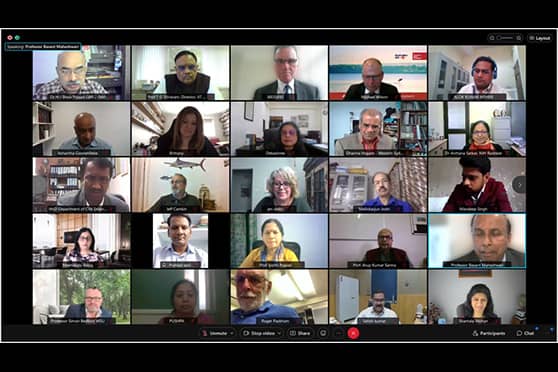IIT Guwahati, Australia India Water Centre, Western Sydney Uni plan water reforms in India


As a collaborative initiative among the Indian Institute of Technology Guwahati, Australia India Water Centre, and Western Sydney University, The first edition of the India Young Water Professional Programme was launched recently.
Manpreet Vohra, Indian high commissioner to Australia, Barry O’ Farrell, Australian high commissioner to India, Debashree Mukherjee, additional-secretary, ministry of Jal Shakti, T G Sitharam, director - IIT Guwahati, Basant Maheshwari, professor at Western Sydney University and more than 100 participants joined the virtual event.
The launch of the India Young Water Professional Program marks a significant milestone in the Australia-India collaboration in the field of water conservation. This program will be implemented by the Australia India Water Centre (a consortium of Australian and Indian universities). This initiative aims to provide a structured platform for capacity building with strategic and long-term investment to support the water management reforms in India.
The objectives of the programme are to equip water professionals with the necessary skills, knowledge, behaviours, and networks that will better enable them to contribute to the development and management of water resources in India, and to address the competency needs and priorities of the water sector in India.
Speaking on the occasion, Manpreet Vohra said that water is a key priority area of collaboration between India and Australia and both countries are working actively on this front. He also added that the programme is a significant milestone in the India-Australia relationship and will go a long way in institutional strengthening and capacity building.
Shedding light on the importance of this collaboration, Sitharam said, “This launch will be a great milestone for AIWC, IIT Guwahati, and Western Sydney University. AIWC is committed to working together for a common goal aligned to the UN Sustainable Development Goals 2030 framework to explicitly contribute to SDG 2 Zero Hunger; SDG5 Gender Equality, SDG 6 Clean Water and Sanitation, SDG 10 Reduced Inequities, and SDG 13 Climate Action. India receives more than 1000 mm annual rainfall and is blessed with the monsoon. ‘India is not running out of water, In fact, water is running out of India’. However, the shortage in India is of storage not of water. Even though Independent India since 1947 has built more than 5800 large dams, the storage is abysmal. We need to look at newer opportunities through campaigns like "catch the rain, where it falls and when it falls" launched by Prime Minister Narendra Modi under the National Water Mission.”
This programme is unique and different from typical capacity building and training programs. It is focused on the Engaged Training and Learning model. About 70% of it is focused on project-based learning through Situation Understanding and Improvement Projects (SUIP). It also focuses on gender equality and diversity because sustainable water management can only benefit from the views and skills of all members of society. A total of 20 participants have been selected for the first edition of this Program (10 men and 10 women) from central and state implementing agencies of the National Hydrology Project.